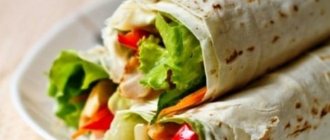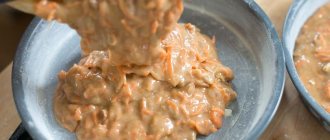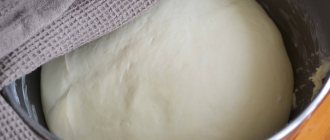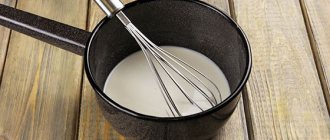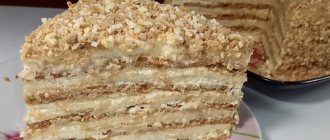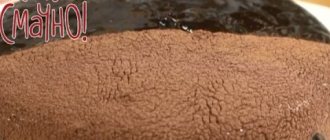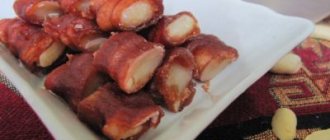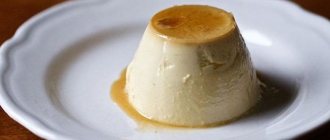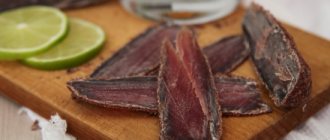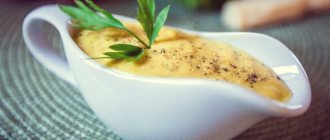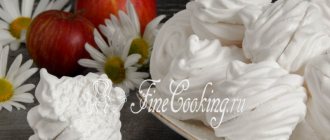09/08/2018 Anna Letova 0 comments
Tula gingerbread is a traditional Russian delicacy that everyone loves - both adults and children. It is so beautiful and unusual that many people wonder if it is possible to make it themselves. The answer is yes, you can. We will present the simplest homemade recipes for this dessert.
The history of the delicacy
Honey cakes with spices were first mentioned in chronicles dating back to approximately 350 BC. e. They were common in Egypt, and in Roman historical chronicles they were called “panus mellitus” - made with honey.
Gingerbread in Rus' and the Russian Empire
“Honey bread” was the name given to Tula gingerbread in ancient Rus', mentions of which date back to 1685. There are several versions regarding the authorship. The most interesting, but not the most reliable, version is that the product was brought to Russian territory by Varangian tribes in the 9th century.
In the Middle Ages, honey cakes were used not only as tasty “snacks” (desserts), but also as a long-term stored supply, dry rations for military campaigns and travel.
The honey cake included rye flour and honey with various types of berry juices. Somewhat later, the Russians began to vary the recipes for their preparation, adding roots, herbs and Middle Eastern spices. At the same time, the components added to honey cakes differed from region to region, and the composition was kept secret. Gradually, Kursk, Perm, Kaluga and, of course, Tula gingerbread began to be produced. Making recipes were passed down from generation to generation.
Tula gingerbread is a printed product. Initially, a special wooden mold was made, which was aged for a long time. After which a design was cut out on it. The range of printed products in the country was diverse and numbered several hundred items.
Tula gingerbreads have repeatedly won both domestic and foreign prizes. The products of the master confectioners Grechikhins have received more than 12 awards, including French and English. The dynasty of Belolipetsk merchants is marked with diamond jewelry from the hands of the Empress of Russia and a gold award from the Serbian king. At the 1912 exhibition in Italy, delicacies from P.I. Kozlov won the Grand Prix, which is now kept in the Tula Museum. At the Paris exhibition of 1915, gingerbread from Tula again took prizes.
Gingerbread today
Tula delicacies received their modern sound in 1954 thanks to A.I. Mikoyan, who gave the green light to the revival of the national gingerbread craft for the date of the All-Union Exhibition (now VDNKh) in Moscow.
In the shortest possible time, master confectioners were found in Tula and the equipment for baking gingerbread was restored. Special molds were made from linden. The very first trial batch, made according to ancient recipes, received praise from the country's leadership.
The product did not go stale for a long time and did not break when slightly bent; the berry filling had excellent taste - a real Russian gingerbread. The delicacy went into series and deservedly became the calling card of the city.
In the summer of 2014, a bronze monument to the gingerbread was unveiled in the central part of Tula.
A little about the famous delicacy
Tula gingerbread cookies with traditional jam filling are not just aromatic and tasty pastries, but one of the most famous symbols of Russian national cuisine. Since ancient times in Rus', rich, soft, fragrant products have been decorated with unusual ornaments, inscriptions and even paintings. It was customary to serve such pastries only for the festive table. And sometimes Tula gingerbread even acted as an expensive gift.
In those days, this treat was a favorite delicacy for any Russian person. Of course, now everything has changed, and ready-made Tula gingerbread can easily be bought in a store. However, it is much more pleasant to make this delicacy with your own hands. Moreover, such a treat, prepared from simple products, without any flavorings or preservatives, will turn out much tastier than store-bought products. And in the process, a recipe for Tula gingerbread at home will help you.
How to cook Tula gingerbread at home - basic recipes
Gingerbread is a flour product, a delicacy made from special gingerbread dough. The filling can be condensed milk, jams with raisins, honey and nuts. The gingerbread is decorated with special three-dimensional designs and icing.
The recipe for Tula gingerbread at home is simple, let's give a few examples.
Classic old recipe
The step-by-step guide is as follows.
- Softened (but not melted) butter is mixed with two eggs. If the honey is candied, it is processed in a water bath. Then let it cool and flavor the dough with it at room temperature.
- Add pre-sifted flour and a pinch of soda to the consistency and prepare the dough, which is kneaded not too stiffly.
- The jam filling is of a thick consistency. Otherwise, the jam is boiled down.
- The dough is rolled out to a thickness of 5-6 mm and 2 round or rectangular flat cakes are formed. The filling is placed on one flatbread and covered with a second flatbread. At the same time, the edges of the flatbreads are connected - the filling should not leak out. After which the workpiece is placed in a special form and then placed on a baking sheet.
- The workpiece is kept at maximum temperature for 90 seconds, then cooled. After this, the cycle is repeated under the same conditions, but with a five-minute exposure.
- In the meantime, prepare the glaze - pour powdered sugar into a container with heated water and keep the solution over low heat, stirring lightly. Then cover the gingerbread with it using a brush.
The recipe includes:
- egg - two;
- honey – 100 grams;
- flour - three glasses;
- butter – four tablespoons;
- soda (pinch);
- jam (jam) – 200 grams;
- one glass of powdered sugar;
- four tablespoons of water.
Homemade gingerbread with jam
The instructions are as follows.
- The components of the workpiece (excluding flour) are thoroughly stirred and heated for 10 minutes. in a water bath until smooth.
- After cooling the mixture, add flour in small portions. You should get a plastic dough with a reddish tint.
- The resulting mass is divided into parts - 2 main and 1 auxiliary, for decoration. Flatbreads are being prepared. Then, using the top of a springform pan, a circle is cut out of the blank.
- Place the filling on one flatbread, and cover the second one on top. Excess filling is removed using a springform pan by gently pressing along the perimeter of the workpiece.
- The remains can be placed on the workpiece as decorations, giving them various shapes.
- A mold ring is placed on the workpiece to prevent the product from spreading.
- Place the workpiece in the oven, where it is kept for 25 minutes at a temperature of 170.
- Prepare the glaze and cover the gingerbread with it using a brush. The baked goods should be firm, but not harsh. GOST allows the replacement of oil in the product with high quality margarine.
Let's look at the list of ingredients.
Dough:
- five glasses of flour;
- one glass of sugar;
- 100 grams of butter;
- two eggs;
- a pinch of cinnamon;
- one spoon of soda;
- five tablespoons of honey (tablespoons);
- jam (jam).
Glaze:
- four large spoons of sugar;
- two tablespoons of water.
Gingerbread with condensed milk
The preparation scheme is as follows.
- Boil regular condensed milk for two hours and cool it.
- Prepare stiff dough (without adding condensed milk). Gradually adding flour to the consistency.
- Divide the resulting dough into 2 parts, which we thinly roll out into flat cakes.
- We distribute condensed milk on one flatbread, level it and cover it with another flatbread. We press the edges along the contour of the workpiece and place it in the oven (temperature about 190) for 25 minutes.
- Cover the finished product with pre-prepared glaze. To achieve the required conditions, the product can be left for 1 hour in a still hot but turned off oven;
List of components:
- three tablespoons of honey;
- about three glasses of flour;
- two eggs;
- a glass of sugar;
- a pinch of soda;
- can of condensed milk;
- 100 grams of butter;
- spoon of cinnamon.
We reveal the secrets of making Tula gingerbread
It has already entered the top gastronomic brands in the country and continues its triumphant march around the world. Tula gingerbread was first mentioned in a scribe book in 1685. At that time, every city in the country baked their own gingerbread, but none of them could compare in taste with the delicacy from Tula. Delicious, rich, aromatic printed Tula gingerbread quickly won love and recognition in all corners of the Russian Empire, and at the beginning of the 20th century it took first place at the International Exhibition in Paris. After the revolution of 1917, the Tula gingerbread was forgotten: production was too expensive, and the secrets of the masters were lost. The revival of Tula printed gingerbread began in the 80s of the last century. Then, out of the many once existing recipes for the delicacy, only one was restored. But this turned out to be enough.
In 2008, Tula printed gingerbread was included in the Russian Book of Records. And today Tula gingerbread tops the top 25 gastronomic brands in the country.
What is the secret of the uniqueness of Tula printed gingerbread? This question was answered to Sloboda at the Tula confectionery factory “Honey Traditions”. In fact, there are five such secrets:
- In the entire history of gingerbread making, the baking process has not been automated, that is, each Tula printed gingerbread is made by hand.
- The dough from which the delicacy is created includes flour, eggs, sugar, honey, a pinch of baking soda and butter. Neither water, nor milk, nor kefir, nor yeast are used to make gingerbread.
- Tula air. There is a legend that “without the Tula spirit, gingerbread will not work.”
- Board for making gingerbread. In the old days, boards were made from linden and pear. In addition to the shape itself, these tree varieties gave the gingerbread a subtle aroma. Nowadays they use birch for this. The creation of each board is a work of art; each factory has its own master to create unique forms. The workpiece is first dried, this process takes from 2 to 5 years. The finished form is boiled in oil. Large and small, figured and simple - there can be more than a hundred of such boards in production! The dough is pressed into them with your fingertips, then the dough is slightly pushed away from the edge. The craftsmen place a rolling pin in front of them and “knock” the gingerbread out of the mold: the edge of the mold is hit with force against the rolling pin, and the gingerbread slowly comes out of the mold. In large production, a special block is used for this - a beater. Then the gingerbread cookies are placed on a baking sheet and baked in the oven for 15-20 minutes.
- Glaze and gloss. As soon as the gingerbread is removed from the oven, hot syrup consisting only of sugar and water is rubbed into it with a stiff brush. When the gingerbread cools, a thin white cobweb appears on it, and it itself becomes glossy. After baking, the gingerbread is considered ready after 24 hours. The masters of the Honey Traditions factory are happy to share the secrets of making Tula printed gingerbread with everyone at special master classes. The program consists of three parts: participants make gingerbread cookies with their own hands, which they then take with them as a souvenir. While the delicacies are being baked in the oven, guests are introduced to the history of the Tula gingerbread business, and then everyone will have a tea party with Tula gingerbread cookies and the most delicate marshmallows. Along with the finished gingerbread, each participant in the master class receives a certificate of completion of training in the 5 secrets of Tula gingerbread. The factory notes that it is not Tula residents and residents of other regions of the country who show interest in making gingerbread with their own hands, but also tourists from near and far abroad.
Students from one of the Moscow schools attended one of these master classes.
Pavel Takmazyan
— This is my first time in Tula. I really liked all the Tula sweets and, of course, the Tula gingerbread itself. I especially like gingerbread stuffed with boiled condensed milk and plum jam. In general, I want to try gingerbread cookies with all the fillings! After the master class I feel like a real cook! I will definitely bring home a sweet present from Tula. I would like to treat everyone to them, because the most delicious gingerbreads are made in Tula!
Ivan Lyubimov
— The master class turned out to be very informative. What I remember most is that the gingerbread dough needs to be kneaded for a long time so that it is softer and the gingerbread turns out even tastier. It’s also very interesting that after baking, the taste of the filling changes - a taste of honey is added to the taste of jam. This is the perfect gift for my grandma's birthday. It is important to me that I made it with my own hands and that it is a very tasty and unusual gift!
Pavel Bobrov
— I used to come to Tula with my parents. Of course, even then we brought a lot of gingerbread with us. But this is the first time I was able to do it myself. Tula gingerbread is famous all over the world, and the master class was quite unusual; I learned a lot of new things. What I remember most is sealing the gingerbread and knocking it out. I didn't think it was prepared that way. I will definitely treat my whole family to it. It would be interesting to repeat this master class again.
For each holiday, the Honey Traditions factory develops a special program. This year Tula will become the New Year's capital of Russia.
Widespread celebrations on the occasion of the most magical holiday of the year will unfold from December 7, 2020 to January 7, 2020.
Especially for this event, “Honey Traditions” has prepared an extraordinary adventure for young Tula residents and guests of the city. From December 1, 2020 to January 10, 2020, little guests of the factory will be able to visit Santa Claus. Together with his granddaughter Snegurochka, the guys will help the good wizard in his difficult task - making New Year's gifts. Each participant will create a sweet gift for themselves and their loved ones with their own hands. And your favorite fairy-tale characters will tell program participants about the traditions of celebrating the New Year in Rus'. All participants of the master class will enjoy fun New Year's competitions and tea drinking with the famous Tula delicacy.
You can sign up for a tour from 9.00 to 19.00 by calling 8−800−600−55−09.
Tula confectionery factory “Honey Traditions” Tula, st. Skuratovskaya, 98, tel. (4872)503−503. www.medovye.com.
Gallery
How to make a pattern on gingerbread
Applying an image to a product is a creative process. To do this, you can use a regular cutting board with a relief image printed on it. For this purpose, the rolled out cake should be placed on a surface with a relief image and processed with a rolling pin - the print is ready.
To obtain a pattern, various relief household products are often used - openwork coasters, kitchen utensils with beautiful carvings, and other objects with three-dimensional designs.
The method is the same - taking an impression using a rolling pin. Some craftsmen themselves fashion various ornaments or appliqués and type congratulatory texts.
Useful tips
A number of useful tips will help you make high-quality and tasty gingerbread.
- During cooking, the baked goods increase in volume. Accordingly, the image spreads somewhat. Hence the rule - the prepared print of the drawing must be of high quality and voluminous.
- The color of the gingerbread is determined by the amount and type of honey used. It is important to take this into account already at the stage of selecting the appropriate recipe.
- The glaze becomes more noticeable when the gingerbread is kept for 5-6 hours after cooking. The pleasant whitishness also depends on the thickness of application to the product. You don't want to make the glaze ahead of time because it can become sugary.
Glaze recipe for Tula gingerbread
Don’t forget about sugar fudge, which is considered a mandatory attribute of the famous products from Tula. To prepare it, grind the powder with milk, mixing them in a saucepan. Then put the mixture on the stove and bring to a boil, then simmer for a few more minutes and remove from the stove.
Generously brush the baked gingerbread cookies with hot glaze using a silicone brush and let the products cool. Very soon the sugar crust will dry and turn white.
